BEST LIGHTWEIGHT WHEELS FOR CLIMBING

If you regularly ride steep, long climbs, you should consider getting the best lightweight wheels or climbing wheels you can find.
The best lightweight wheels for climbing are stiff, aerodynamic, comfortable, and light. Those characteristics will help you convert your power and hard work as efficiently as possible going up while confidently handling the high speeds and frequent cornering coming down.
But there are dedicated climbing wheels and wheels that climb and perform well on a range of terrain and surfaces.
In this post, I’ll share with you the kind of riding I believe best suits climbing wheels, what matters most when choosing lightweight wheels, and our reviews of those we’ve tested from some of the leading wheelmakers.
In The Know Cycling is ad-free, subscription-free, and reader-supported. If you want to help keep it rolling without any added cost to you, buy your gear and kit after clicking the store links on the site. When you do, we may earn an affiliate commission that will help me cover the expenses to create and publish our independent, comprehensive and comparative reviews. Thank you, Steve. Learn more.
BEST PERFORMER – ROVAL TERRA CLX II
While the Roval Terra CLX II is a versatile road and gravel wheelset, it’s the best road climbing wheelset we’ve tested and the least expensive among the top performers in this category. Roval also makes the Alpinist, its designated climbing wheelset, but the Terra (1278g on my scale with a HG freehub) is just as light and has wider rims, allowing you to run wider tires for more comfort without any aero loss.
Yet, despite their weight and relatively low profile (33.0mm measured), they are also great all-around road and racing wheels. With 28mm Continental Grand Prix 5000 S TR tires inflated in the low 50psi range (25.3mm internal width, 68kg rider weight), you’ve got a race-ready setup.
Stiff, responsive, and compliant, they handle better than most riding switchbacks or just freewheeling downhill at high speed. The DT Swiss 180 EXP hub is also a smooth, quiet partner.
At US$2500, £2500, or €2850 retail price, while not cheap, you can order the Roval Terra CLX II through this link to Performance Bike.
You can read my full review here.
WHAT YOU NEED TO KNOW ABOUT THE LIGHTWEIGHT WHEELS
Click on any red statement below to go directly to that part of the post
Find what you're looking for at In The Know Cycling's Know's Shop
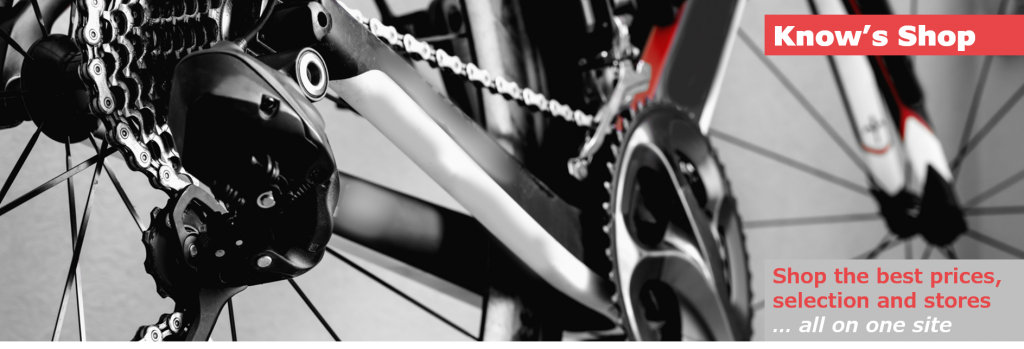
- Compare prices on in-stock cycling gear at 15 of my top-ranked stores
- Choose from over 75,000 bikes, wheels, components, clothing, electronics, and other kit
- Save money and time while supporting the site when you buy at a store after clicking on a link
WHO CLIMBING WHEELS ARE BEST FOR
Climbing wheels are for riders who do long rides that are centered on climbing up and going down 7% and steeper pitches that go on for kilometers or miles at a time.
I don’t mean those of us who regularly ride “rollers,” those 4-5%, half-kilometer or quarter-mile hills that might total 5 km or miles during the course of a 40 to 75 km or mile ride. Or even those rides that might include a half km or even a half-mile climb that averages 7% during your ride.
You could certainly ride lightweight wheels on those kinds of rides to give you some advantage going up steeper sections. But you must ask yourself whether what you gain on the hills with climbing or lightweight wheels is worth what you lose on the flatter sections and downhills when you don’t ride more aero, all-around ones.
My experience? I really miss the deeper wheelset on the flats and going down the rollers when I’m riding climbing wheels or any lower profile wheelset on all but the steepest climbs and long rides.
For example, I did a 125 mile/200 km long ride with 8500 feet/2600 meters of climbing on a set of 25mm deep, 1350 gram lightweight wheels that included two steep, long, tough alpine climbs that exceeded 12% on average. The wheels were great on those climbs, the best I had ridden from that model year, but I think I worked just as hard, if not harder keeping up with the group on the far more frequent flat and rolling sections because I didn’t have deeper wheels.
Several months later, I did a steeper, shorter route, a 100 mile/160 km ride with about 11,000 feet/3350 meters of climbing on a 1425 gram, 33mm deep set of wheels. It seemed that I was always climbing or going downhill on that ride. I’m glad I was riding those wheels.
As all-around disc brake wheels have entered their 4th generation, they are getting lighter and deeper. Several that are now 45-50mm deep weigh between 1400 and 1500 grams. With a deeper carbon rim, they tend to be stiffer and transfer your power better than shallower, lighter ones do.
The best lightweight wheels for climbing have become deeper, some now close to 40mm, whereas several years ago, most were in the low 30mm range.
To set themselves apart, or at least to notice a performance difference compared to the latest all-around wheels, today’s climbing wheels need to be 100 to 150 grams lighter than those all-arounders while being deep enough to feel essentially as stiff.
Where I ride and even when I do all but the steepest routes with 1,000 feet or more of elevation every 10 miles of riding (300 meters per 15 kilometers), all-around road disc wheels are the way to go. I’ve reviewed the best of those wheels here.
If, on the other hand, I lived at the foot of or regularly visited the Rockies, Sierras, Pyrenees, Alps, etc., I’d definitely want to be able to put a set of lightweight wheels for climbing on my bike for those days when I’m doing those steep, long alpine climbs and descents.
Descending is not often considered when choosing climbing wheels. But, to do it fast and safely, aero and crosswind performance, stiffness, comfort, and handling are key to enjoying the ride downhill that you earned working so hard going uphill.
Of course, you could always have a support vehicle follow you and quickly change your climbing wheels when you hit the big mountains and switch back when you get off them.
What? Are your friends or partner not into that? Mine either.
Regardless, climbing wheels are also for those of you with deep pockets. Dedicated wheels for climbing may be the third or fourth wheelset in your quiver. You may still have stock wheels that came with your bike or another alloy set for all-weather training. You may also have all-around or aero wheels (or both) for most of your training, group riding, road racing, or TT riding. Maybe a gravel wheelset or some MTB wheels for off-road adventures.
We’re seeing more and more all-road wheels available that climb and descend well on well-paved, poorly-paved, and gravel roads. Some are nearly as good on steep pitches as pure climbers, and their versatility can serve you well, even though they’re not as fast as the best all-around wheels on and off-road. I’ve included the best climbing all-road wheels in this review.
As most of the best climbing wheels cost at least $2000/£1500/€2000 and many run half again more, it’s not a purchase for those trying to stick to a cycling budget. Lucky you!
LIGHTWEIGHT WHEELS SELECTION CRITERIA
If you believe weight is the primary benefit of riding a dedicated climbing wheelset, is that the primary criterion for choosing between them? Far from it.
When I evaluate wheels, I look at four groups of selection criteria and about 20 specific ones within those groups.
Immediately below, I’ve highlighted the relative importance of those criteria for wheels you’ll want on long, steep climbs and descents vs those for all-around and deeper aero wheels.
As you can see from the criteria I’ve emphasized for picking wheels for the mountains, half of them – aerodynamics, compliance, braking, and rim profile – are not criteria you would consider in choosing what has been traditionally considered a ‘climbing wheelset’. These are important characteristics to ride fast and confidently on the high-speed, steep descents you’ll experience going down a long mountain pass.
In these situations, you’ll want aerodynamic wheels for max speed with rim profiles that keep the bike stable in crosswinds. While most dedicated lightweight wheels for climbing are lower profile than all-arounds, you can still shape the rims to reduce drag and cheat the crosswinds.
You’ll also want compliant wheels going down often rough alpine roads and handle well as you are whipping through the switchbacks. If you are riding rim brake wheels, you’ll want to brake reliably at high downhill speeds and in all weather conditions. You don’t want any fading or degradation in braking on long descents. While this was more important for alloy and carbon rim brake wheels, disc brake rotors on road disc wheels must be aligned well with disc brake calipers and supported by good hydraulic brake systems to make it all work.
For climbing, you might as well take advantage of lightweight wheels, but you also want ones that transfer your energy into power as effectively as possible. That’s why stiffness is emphasized. When you are cranking out 250-400 watts trying to keep upright going up pitches ranging from 7% to 15% for what seems like forever, you want stiff wheels to convert your effort as efficiently as possible to the road.
As I hope you can see, you have different and equally important needs going up and down a long, steep mountain road, and weight is only one of many considerations. That’s why I think “climbing wheels” is a misnomer. Instead, you should consider these as both climbing and descending wheels or lightweight wheels that must perform well in both directions.
Finding wheels that accomplish all of this requires some trade-offs. Very light wheels aren’t usually the stiffest, for example. And aerodynamic wheels to some mean deep dish rims, which aren’t usually the best at handling on windy mountain descents.
There are also some things that you really don’t want to compromise on. Older carbon clinchers have no place on long downhills where you need to do a lot of braking as they can overheat, warp, ruin the wheels, and result in a blowout at speed. I no longer included rim brake wheels in this review as they are generally inferior to disc brake ones.
At the same, you don’t drag your brakes and overheat or warp your rotors.
The heavier you are, the more these criteria matter. You’ll put more energy into the bike going up and will travel at higher speeds and create more braking energy going down. A rider weighing 190lbs or 200lbs or more will want a stiffer wheelset than a 150lb rider with the same watts per kilogram. They will also need more room to brake.
On the other hand, the lighter rider will be more prone to getting pushed around on a windy descent if the wheel’s profile doesn’t handle crosswinds well and will benefit more from an aerodynamic profile that cuts through both crosswinds and the apparent wind created going down a mountain. None of the wheels in this review here are so deep or have rim profiles that cause a big problem, but some are shaped better than others to have no problem except in the strongest winds.
Looking to the pro racing circuit for guidance on climbing and descending wheels is a mistake. The best climbers typically weigh 135 to 145 lbs, have 6% or less body fat, often ride super-light, super-stiff bikes, and put out more than 5 watts/kilo going uphill during a race. They also have support vehicles to give them different wheels or bikes during the race, depending on the terrain.
I’d guess most road cycling enthusiasts have 15-20% body fat (the amount for a “fit body type”), climb at 3 to 4 watts/kilo, and often ride comfortable endurance bikes rather than super stiff or super light race bikes. Sorry to say, the pros and we amateurs live in two different worlds.
Even those of you lighter men and women with natural climber body types, <10% body fat, 4+ w/kg ratios, and on very stiff racing bikes will still finish 10-20% (3-6 minutes on an hour ride) behind pro-level racers on the most challenging climbs. You can draw on lessons from the pros, but buying the same wheels they ride, hoping to get a far better result, is not likely.
If we could buy their genetics, we’d have a better shot.
So with all that as background, let me share with you my evaluation of the best lightweight road disc climbing wheels I’ve tested. If you’re looking for rim brake wheels, I’ve recommended the best for climbing and other categories in this review.
REVIEWS OF LIGHTWEIGHT DISC BRAKE WHEELS FOR CLIMBING
Best Performer
ROVAL TERRA CLX II – AN ALL ROAD WINNER AND BEST CLIMBER
While the Roval Terra CLX II is a versatile road and gravel wheelset, it’s the best road climbing wheelset we’ve tested and the least expensive among the top performers in this category. Roval also makes the Alpinist, its designated climbing wheelset, but the Terra (1278g on my scale with a HG freehub) is just as light and has wider rims, allowing you to run wider tires for more comfort without any aero loss.
This one wheelset excels across a broader range of terrain and surfaces than most other high-performance all-road wheels we’ve tested and does so at a better price.
My fellow tester Miles calls the Roval Terra CLX II “quiver killers” after doing a range of road, gravel, and cyclocross rides and races on them. I used them to “cat up” and keep up on lumpy group road rides and challenging gravel ones. He set some climbing PRs with these wheels while I kept up with my buds on climbs where I typically get dropped.
Despite their weight and relatively low profile (33.0mm measured), they are also great all-around road and racing wheels. With 28mm Continental Grand Prix 5000 S TR tires inflated in the low 50psi range (25.3mm internal width, 68kg rider weight), you’ve got a race-ready setup.
The Terra CLX II wheels’ ability to maintain speed on fast courses surprised us. While you would want deeper wheels for a flat time trial, these Rovals handle better than most of any depth when cornering, on descents, and over rolling terrain. They snap up to speed in sprints, and you can drive them through corners.
Stable in sidewinds, the Terra CLX II is also very compliant. That might be surprising for a wheelset as responsive when accelerating and cornering as these. But given the ample internal rim width, there’s plenty of opportunity to create a comfortable combination with the right tires and inflation pressure.
I rode 28mm Vittoria Corsa Pro TLRs at 60psi on the Terra CLX II for a ride filled with climbs and rollers on cracked, mostly worn pavement that felt supremely comfortable at my touch points. If only my legs and lungs felt half as good!
Roval uses the DT Swiss 180 ratchet EXP internals with ceramic bearings in their CLX II hubs, ones I find roll smoother and quieter when easily and regularly cleaned and greased than DT Swiss’s 240 internals.
If you love to mix it up and ride aggressively, fast, and comfortably on a range of road, gravel, and cyclocross terrain and surfaces, the Roval Terra CLX II with the right tires is an all-road winner.
Note that it’s the Roval Terra CLX II I’ve reviewed here. The first generation Terra CLX (heavier and no longer made), Terra CL (different hub and spokes, heavier), Terra C (different rim, hub, and spokes, considerably heavier), and Terra CLX EVO (dedicated gravel wheels) while less expensive, perform differently enough not to be considered in the same all-road performance discussion with the Terra CLX II.
And at its US$2500, £2500, or €2850 retail price, while not cheap, the Roval Terra CLX II is still less than its climbing competitors in USD. You can order it while supporting the site’s ability to provide more independent reviews like this one at no additional cost to you when you buy it through these links to Performance Bike.
ZIPP 353 NSW – VERSATILITY TO A FAULT
Despite a depth that suggests it is an all-around wheelset, the Zipp 353 NSW wheelset doesn’t carry the momentum that the best all-around wheels do and climbs and descends nearly as well as the best, dedicated climbing wheels. It also performs well on everything from smooth paved roads to rough gravel ones.
Indeed, versatility is one of its greatest strengths.
At 1248 to 1268 grams, depending on the hubset you specify, the 353 NSW is almost freakishly light for a non-tubular wheelset of its depth and width. It’s 150 to 200 grams lighter than most of the current generation of tubeless disc carbon wheelsets and only about 100 grams heavier than the lightest, pure climbing ones.
It’s stiff, handles extremely well, and is supremely comfortable.
And boy, does it climb! I almost had to check that I hadn’t left my water bottle or saddle bag at home when I hit the hill a quarter-mile from my house the first time out.
Miles blew away the competition when he rode the 353 NSW in the Crank the Kanc race with a 5-mile, 7% uphill finish. Since the race starts with a 10-mile 1-2% grade, he put these Zipps on his Giant Propel aero bike. It turned that bike into a legitimate climber. That’s versatility for you.
We didn’t experience any effects of crosswinds riding the Zipp 353 NSW on flat and downhill terrain. While its rims have the sawtooth pattern designed to neutralize them on their deeper 454 NSW, crosswinds haven’t been an issue with the last couple of generations of Zipp mid-depth wheelsets we’ve tested. Even Zipp told me they used the sawtooth design on the 353 NSW principally to reduce weight.
Tracking in turns, making quick direction changes, and doing other handling maneuvers on both good and rough roads with these Zipps produces a confident thrill unmatched by most wheelsets.
And comfortable? You bet. Nate described them as “plush over bumps at high speeds.” Miles called them “fantastic, so comfortable cruising over imperfections.” I concur.
With its inside hookless rim width I measured at 25.5mm, we rode the 353 NSW with 28mm Schwalbe Pro One TLE during our test rides between 55 and 60 psi. I measured these tires, and the 28mm Specialized S-Works Turbo and Bontrager R3 Hard-Case Lite are all narrower than the rim. That will give you reduced aero drag at high speeds.
Yet, these Zipp 353 NSWs aren’t aero stars. All of us noted that you’ve got to keep the pressure on the pedals to keep your speeds up.
I rode the 353 NSW back to back on the same day and on the same route against the Zipp 303 NSW that it replaced. The 303 NSW was clearly superior in my ability to hold speed or momentum. I’m not sure why – likely because the 303 NSW is a 250-gram heavier wheelset, only a touch deeper than the undulating 42-46 mm deep 353 NSW and with an earlier generation of the smooth-flowing Cognition hub – but I noticed a big difference.
We had split opinions on the stiffness of the 353 NSW. Nate, one of the strongest age-group climbers in the region, was “underwhelmed by their stiffness”. He found them sluggish on short, punchy climbs. On the other hand, he thought the rear hub engaged more rapidly than the many other wheelsets he’s tested.
Miles, no slouch when it comes to climbing and only a few kgs lighter than Nate, thought these Zipps were “incredibly stiff,” but engagement felt average, especially when he accelerated on the steepest gradients during his hill training. Once engaged, however, he loved the way they accelerated.
To-mA-to, To-mAH-to? Hard to know.
I’ve now done a few gravel events on the 353 NSW. As expected, the comfort, handling, and climbing ability we’ve enjoyed on the road translates well off of it.
While the Zipp 353 NSW is clearly a standout climber and would likely perform with the best of them on gravel, it’s not as fast against other all-arounders. It’s almost as if its versatility works against it, especially when trying to justify the US$4220/£3376/€3798 price tag.
But if what it does well is the combination of things you are looking for, you can pick it up at BTD (BikeTiresDirect), Performance Bike, Merlin, and Sigma Sports.
ENVE SES 2.3 – A PURE CLIMBER
The ENVE SES 2.3 is the epitome of a pure climbing wheelset. If I were writing a story about the ten best road climbs in the world for some glossy magazine, I’d ask the publisher to feature a photo of a cyclist on a bike with ENVE SES 2.3 wheels to give my article the utmost authenticity.
Many of us enthusiasts put our game faces on when it’s time to head up a 7% or steeper pitch, be it on a mountain road or a segment of a rolling course. We’ll shift down into an easier gear, slow our cadence, and grind it out.
Going down is usually a well-earned thrill. But, depending on your confidence in your bike and handling skills, the excitement can be full of nervous or freeing energy.
The ENVE SES 2.3 makes me want to seek out a well-paved climb and revel in the descent. While not the wheelset I would choose for every day, flatter rides or those on rougher surfaces, if it’s a day with 1,000 feet or so of elevation every 10 miles, I want to roll on the 2.3s.
Fellow-tester and P/1/2 road and crit racer Miles reported that the ENVE SES 2.3 “flew uphill.” Nate, a hill climb event podium regular, noted how well the wheelset transferred his power and felt “very light” for climbing. As a true uphill grinder, these ENVEs help me remember, if not relive, my younger days when I could get uphill as fast as my riding buddies.
It’s one of the stiffest and lightest climbing wheelsets we’ve tested. That’s an unbeatable combination. But, as we’ve noticed in its deeper wheels like the SES 3.4 and SES 4.5, there’s something in the way ENVE designs or laces or tensions its wheels that give them a spring-like response that sets them apart when it’s go-time.
Nate enthused the ENVE 2.3 is very lively and responsive. Even in his stiff Specialized Venge bike, “the wheels accelerate fast and give back the power you put in. And the hub engages immediately and is also nice and quiet.”
Miles bragged that he was winning town line sprints against riders with deeper wheels. He also used the wheels’ superior responsiveness and acceleration in pacelines to maneuver away from trouble when riders in front of him quickly changed their line without maintaining their speed.
Miles and Nate quickly noted how confidently and predictably the ENVE SES 2.3 went downhill. Miles leaned into them without hesitation at high speeds on technical descents during one P/1/2 race. With zero need to micro-adjust for side-to-side motion, Nate was totally comfortable riding downhill at higher speeds.
I’ll admit to being a bit more cautious than my better bike-handling fellow testers when cornering at downhill speeds on these ENVE wheels. While all of us rode the 2.3 with 28mm Schwalbe Pro One TLE tires, and I also tested them with the same size Continental Grand Prix 5000 S TR, I didn’t feel as confident leaning into turns as I do on climbing wheels that have a 25mm internal and 30mm external rim width compared to the 2.3’s 21.1 mm internal, 25.7mm external measured dimensions.
Call me spoiled or a wimp, but I prefer wider rims for my tires.
Nate and I also experienced less compliance on rougher roads on the ENVE SES 2.3 than on other climbing wheels we’ve tested. We inflated the tires close to the pressure ENVE recommends for these wheels, the tire width, and our weight, pressures consistent with the SRAM tire pressure calculator and a good deal less than the Silca one.
Still, you can feel every imperfection on an asphalt road and get a harsh ride on older or naturally rough pavement like chip seal.
And, of course, with its 28.5mm deep front wheel and 32.6mm deep rear, these aren’t aero stars. You can certainly accelerate up to aero speeds quickly, but keeping it there is more work than we’ve experienced on most other climbing wheels.
That’s less important in a paceline where drafting plays a bigger part. But, as a wheelset that’s less aero and less comfortable than most, the ENVE SES 2.3 isn’t one we’d choose for its versatility to ride both on climbing days and for everyday training and racing on various terrain.
But, for the fast-riding road enthusiast and racer looking for a dedicated climbing wheelset, the ENVE SES 2.3 is off the front. With a retail price of US$2850, £3350, €4000, you can order it using these links to recommended stores BTD (BikeTiresDirect), Performance Bike, Merlin, and Sigma Sports.
BONTRAGER AEOLUS RSL 37 DISC – LIGHT AND NIMBLE CLIMBER
The Bontrager Aeolus RSL 37 disc wheelset is a lot of fun to ride. Scooting around with it on my bike brings me back to how I remember riding as a kid. You go left, right, up, down, and straight ahead without much thought. You go where you want without holding back.
These wheels are very light and yet stiff enough without being overly so. That combination made me feel agile and free while riding the RSL 37 in almost every situation. I climbed my most challenging steep, long “hill repeats” with comparative ease and did a few 50-mile, rolling rides on days after my hardest interval training of the week and felt totally relaxed and unfatigued during and at the end of those rides.
I’ll admit, I felt like something was out of whack when I rode the RSL the first time. It was early spring with plenty of crosswinds, and I was coming off too many stay-at-home-mandated Zwift rides. Early-season legs, wind in my face or from the side, and bib tights can make me feel a bit slow.
With the Bontrager RSL 37 disc, I cut through all of that. I immediately felt light, almost too light, and worried I’d get pushed around in the winds. Didn’t happen. The freehub engaged on command, and the wheels accelerated as quickly as I wanted and far faster than expected to the point where I had to shift down the cassette sooner than I normally do to keep up my speed.
At 37mm, the RSL rims are deeper than climbing wheels have traditionally been but about the same as the benchmark for that category set by the ENVE SES 3.4 (38mm front, 42mm rear) a few years ago. They’re nearly as deep as where carbon all-rounders have historically started (40mm) but no longer where they currently range (45-50mm).
For me, the Bontrager Aeolus RSL 37 disc is a pure climbing wheelset. It climbs and descends as well as any I’ve reviewed from any brand except for nearly 2x the price of the Zipp 353 NSW. Bontrager must also think so as they retired the 28mm deep Aeolus XXX 2 disc wheelset in its lineup for the RSL 37.
At the same time, Bontrager replaced 47mm deep all-around Aeolus XXX 4 with a slightly deeper (and wider and lighter) RSL 51. Makes sense, as I found the RSL 37 doesn’t sustain your momentum, as I’ve experienced with a deeper and slightly wider 45mm-50mm all-around wheelset.
The tires I rode these wheels with – 25C Bontrager R3 Hard-Case Lite, Continental Grand Prix 5000 tube-type tires, and the tubeless Continental Grand Prix 5000 TL tubeless – measured within a half mm of the RSL’s 27.5mm outside width.
As far as wheelset weight goes, I normally don’t make much mention of it because most of us can’t tell the difference between wheels weighing within 100-150 grams of each other that are typical of what you find from wheels in the same category. But since I’m reviewing a climbing wheelset and there may be a few of you weight weenies reading along, and principally because Bontrager gives you a few options that make a difference, I’ll go through it here.
If you want to use tube-type tires on these hooked rims, Bontrager provides you with a cloth-like rim strap along with the wheels that you can easily install by stretching it over the rim wall and snapping it into the rim bed. Per my scale, these weigh 22 grams per wheel.
The cloth strips won’t hold the air or sealant if you prefer tubeless tires. Instead, Bontrager also ships you plastic rim strip inserts to go into the rim bed. Those need some experience to install without cracking or breaking or getting them just enough off-center to mess up the bead lock alignment. They also add 62 grams to each rim, an unwarranted penalty if you care about climbing wheel weight.
The best solution is good old rim tape. One wrap or two. I tried both, and each sealed up successfully. The tape weighs 5-10 grams per wheel, depending on the kind you use and the number of wraps.
Bontrager has recently introduced some branded rim tape, and I prefer it to ENVE and Stan’s tape that I have historically used. You can order it here. Get the tape that measures the same as the internal width of the rims. In this case, that’s 21mm. I’m not sure if they will include the tape in the box with the wheelsets in the future.
No matter how you set it up, this wheelset will be light. I set them up initially for tubed-tire riding with the cloth-like rim straps (1376g) and later pulled them out and taped the rims (1352g, not including the valves) and mounted tubeless tires. With the 62g per wheel tubeless inserts, they’d weigh in around 1450 grams.
At 1352g for tubed or tubeless tires, it’s an easy choice.
Enough about climbing weight already! Going downhill and cornering at speed on the RSL 37 is a confident blast. And you don’t have to worry about crosswinds riding exposed roads. Simple. Fun and done.
As to comfort, these Bontragers aren’t any more or less so than most set up with tubes and the added pressure they require, even with the RSL’s 21mm inside width. As with any other wheelset this wide, you could safely lower your 25C tire pressure 5psi below the suggested level, use tubeless tires and drop it 10psi or mount up 28C tires. Wider tires would add a good deal more weight and further diminish your aero performance when riding above 18-20mph/29-32kph.
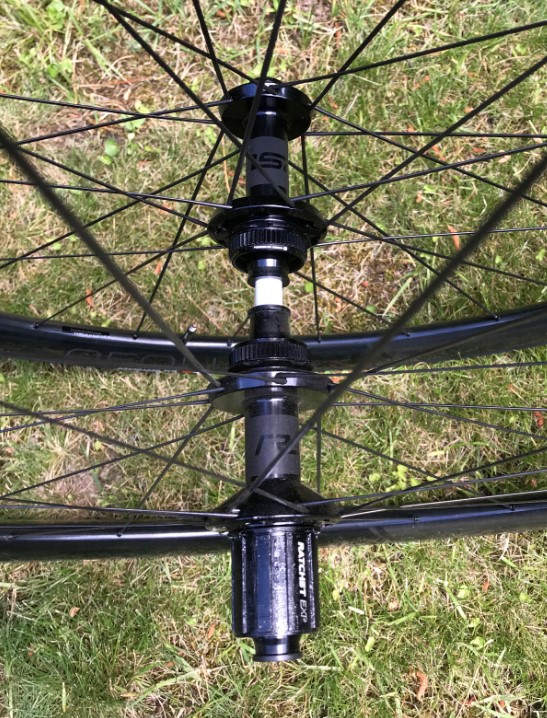 These wheels get an attractive glossy finish with black stealth logos. Also contributing to a skinny look and the low weight are the new DT Swiss 240 EXP hubs used on this wheelset. They roll a bit smoother than the last generation DT 240s, but their freehubs are a bit louder even after I regreased them. They’re not nearly as loud as Chris King, Industry Nine, or other hubs seeking attention, and DT Swiss hubs with a very similar design to the EXP have historically required next to no maintenance.
These wheels get an attractive glossy finish with black stealth logos. Also contributing to a skinny look and the low weight are the new DT Swiss 240 EXP hubs used on this wheelset. They roll a bit smoother than the last generation DT 240s, but their freehubs are a bit louder even after I regreased them. They’re not nearly as loud as Chris King, Industry Nine, or other hubs seeking attention, and DT Swiss hubs with a very similar design to the EXP have historically required next to no maintenance.
All in all, the Bontrager RSL 37 does a joyful job of its main purpose in life – climbing – and is a wheelset you can feel quite spry riding any day on rolling routes. Priced at US$2700, £2000, €2575, you can order them from Bontrager and Sigma Sports.
FULCRUM SPEED 25 – ROAD CLIMBER AND ALL-AROUNDER
The Fulcrum Speed 25 wheelset can serve two purposes for the road cycling enthusiast. It’s light and stiff enough to climb mountain roads, and its low-profile rims make it a suitable all-arounder for those riding in windy areas.
A smooth-rolling hubset, dead-quiet freehub, and ample compliance make the miles I’ve spent on the Fulcrum Speed 25 a real pleasure. My rides on this wheelset are more like low-stress outings than test rides.
High-intensity interval training, or HIIT workouts, seem less intense and less of a workout on this Fulcrum wheelset. It makes climbing steep mountain roads less about the effort I’m putting into climbing and more about the experience I’m getting on the mountain.
It’s almost as if the Fulcrum Speed 25 is the wheelset equivalent of “comfort food” for climbing and rolling around on my bike on any terrain.
Yet despite all of the pleasure I get riding the Fulcrum Speed 25 and my evaluation that it performs on par with the average of the climbing wheelsets we’ve tested, it doesn’t stand out for any one or combination of attributes beyond its smooth rolling and riding comfort.
It’s not as stiff as the stiffest climbers or as responsive as the most nimble ones. While this wheelset is certainly light at 1299 grams with a Shimano HG 11-speed hub on my scale, there are lighter and heavier ones in this climbing wheels category. And though my experience is admittedly more anecdotal than scientific, the Fulcrum Speed 25 has never been the fastest wheelset I’ve ridden up long, steep climbs in head-to-head comparisons against other climbing wheels.
Going downhill on the Fulcrum Speed 25 is a blast. With 28mm tires on its 21mm internal width rims, the cornering is confident, the ride comfortable, and the speed is as fast as you want to make it.
Yet at nearly 27mm deep, I’ll guess (since I can’t test) that you can’t go as fast as some of the others in this category that are 10-15mm deeper. On the flats, I don’t feel any aid from this wheelset in maintaining my speed above 20mph/32kph the way all-around wheels with a 45mm or deeper set of rims can provide.
Like all the wheelsets I’ve tested in the climbing category, including the deeper ones, this Fulcrum wheelset isn’t bothered by side winds, either on the flats or in the mountains. On the windiest days, I feel the high cross winds pushing my torso, but not this wheelset.
For some cycling enthusiasts, a light wheelset that climbs well, is unaffected by crosswinds, and is a real joy to ride on any paved road terrain is more important than having the fastest performer. If that speaks to you, this wheelset is worth considering.
With a retail price of US$2600, £2000, €2250 but available for less from some stores, you can order the Fulcrum Speed 25 wheelset at Merlin.
BUT WHAT ABOUT…
Reviews of wheelsets only from Zipp, ENVE, Bontrager, Roval, and Fulcrum? I can imagine what you’re thinking.
Please don’t. I would love to share reviews of climbing wheelsets from DT Swiss, Shimano, Campagnolo, and a couple others.
Model changes, supply chain issues, or limited US distribution have made getting some of the latest models from these companies quite difficult. I’ll hopefully be able to test a few of these in the coming year when they are more available.
* * * * *
Thank you for reading. Please let me know what you think of anything I’ve written or ask any questions you might have in the comment section below.
If you’ve benefited from reading this review and want to keep new ones coming, buy your gear and kit after clicking the store links in this review and others across the site. When you do, we may earn an affiliate commission that will help me cover the expenses to create and publish more ad-free, subscription-free, and reader-supported reviews that are independent, comprehensive, and comparative.
If you prefer to buy at other stores, you can still support the site by contributing here or buying anything through these links to eBay and Amazon.
You can use the popup form or the one at the bottom of the sidebar to get notified when new posts come out. To see what gear and kit we’re testing or have just reviewed, follow us by clicking the icons below.
Thanks, and enjoy your rides safely! Cheers, Steve
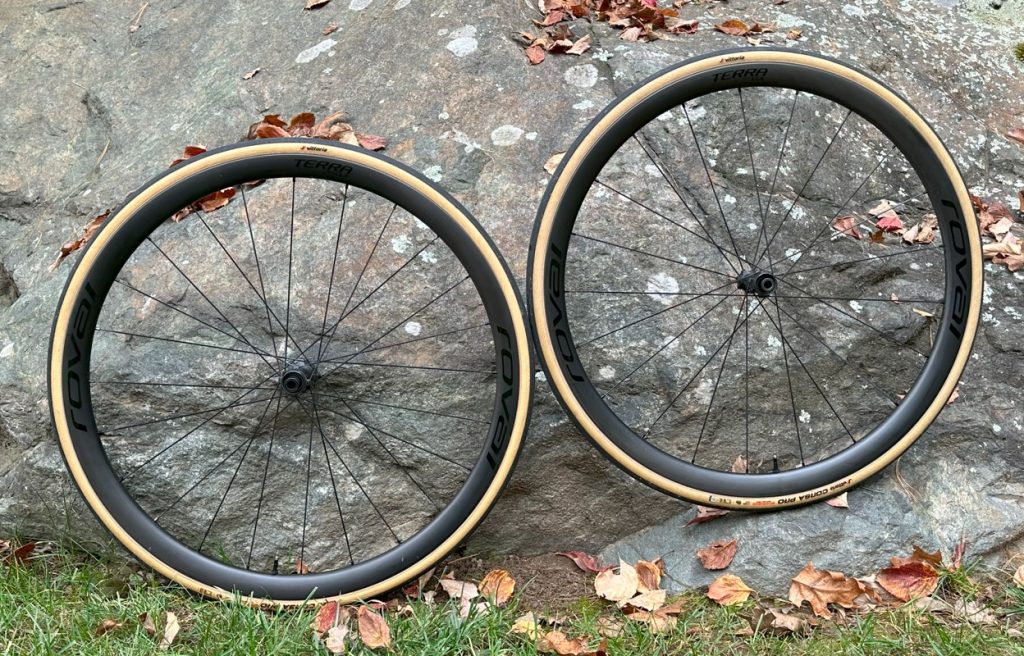
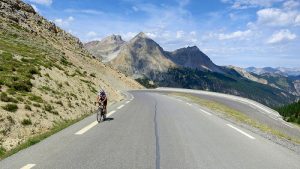
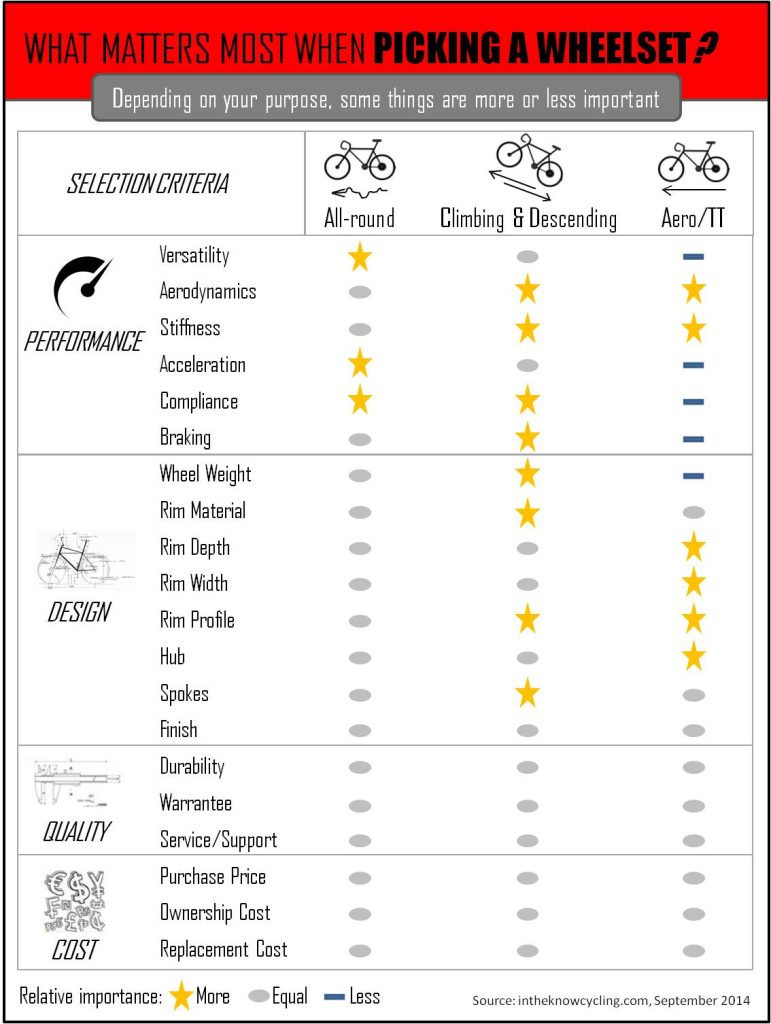
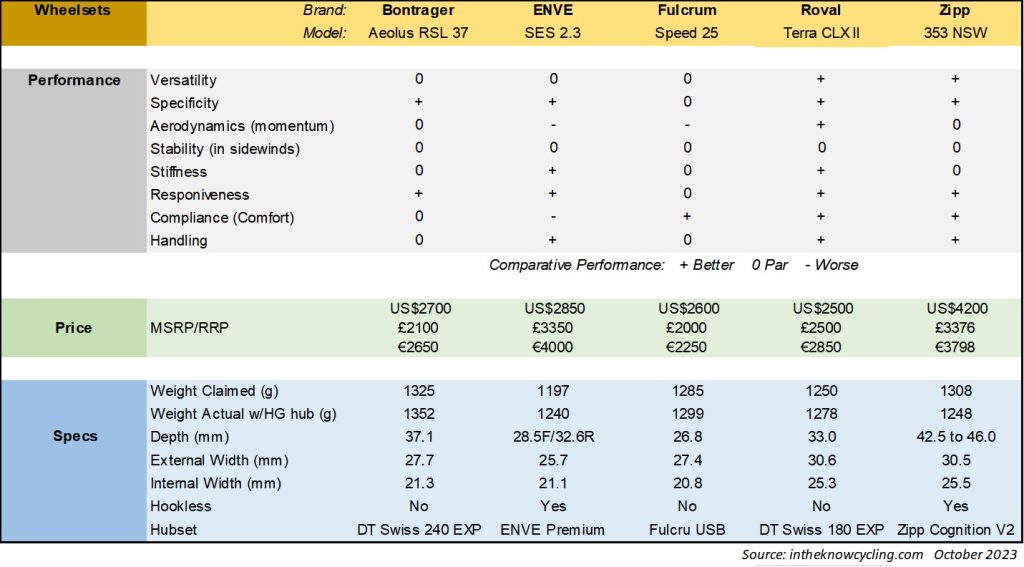
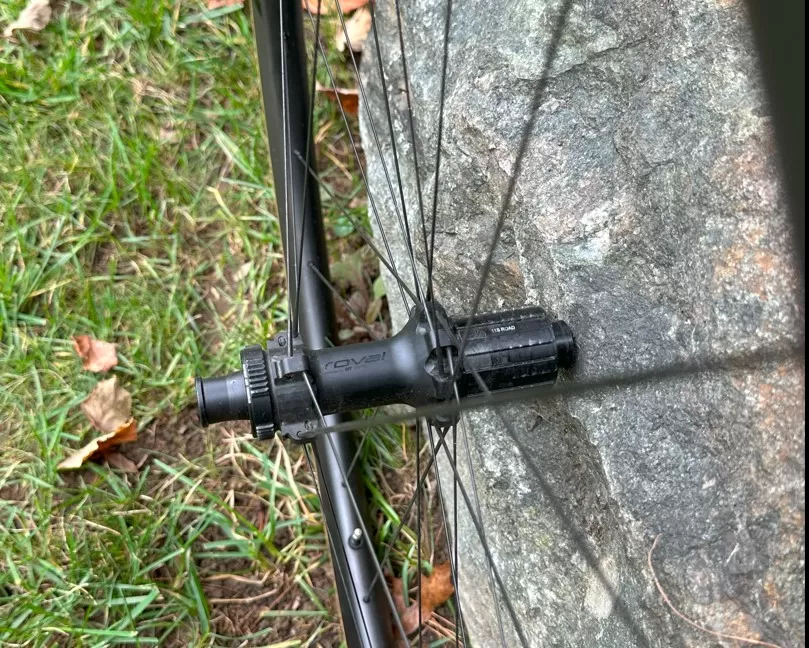
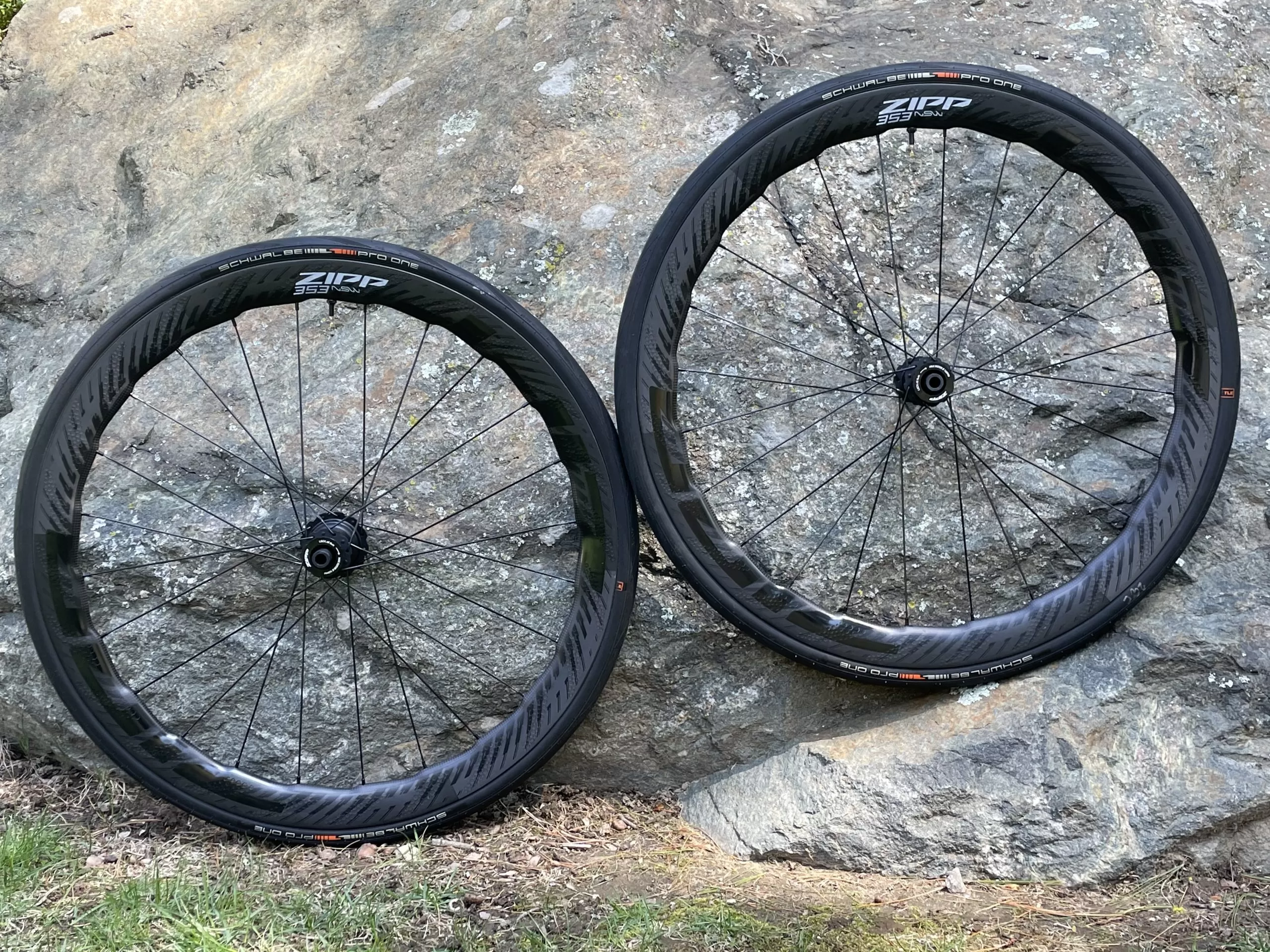

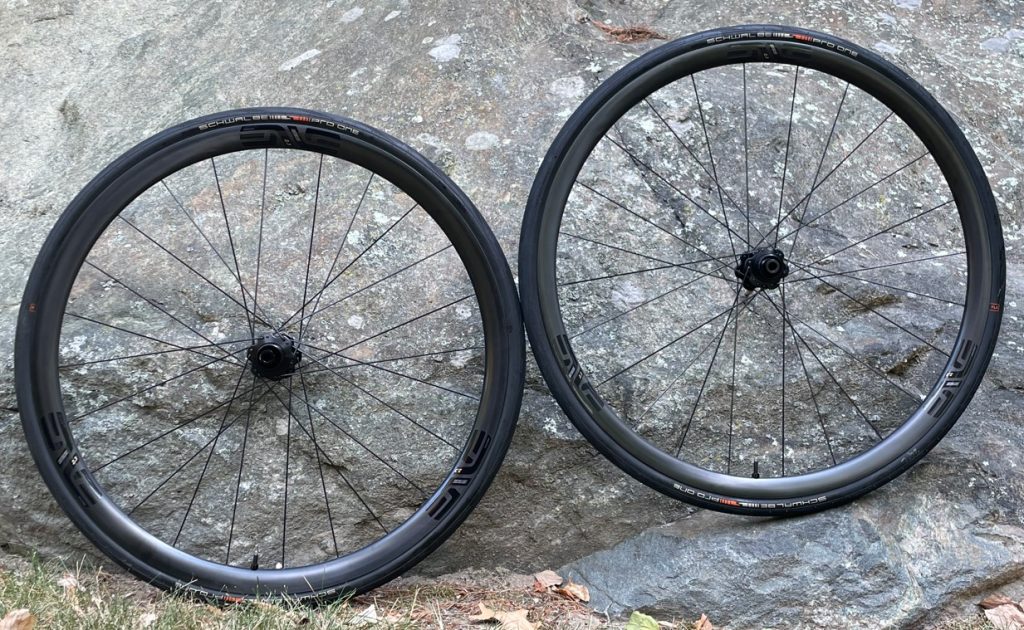
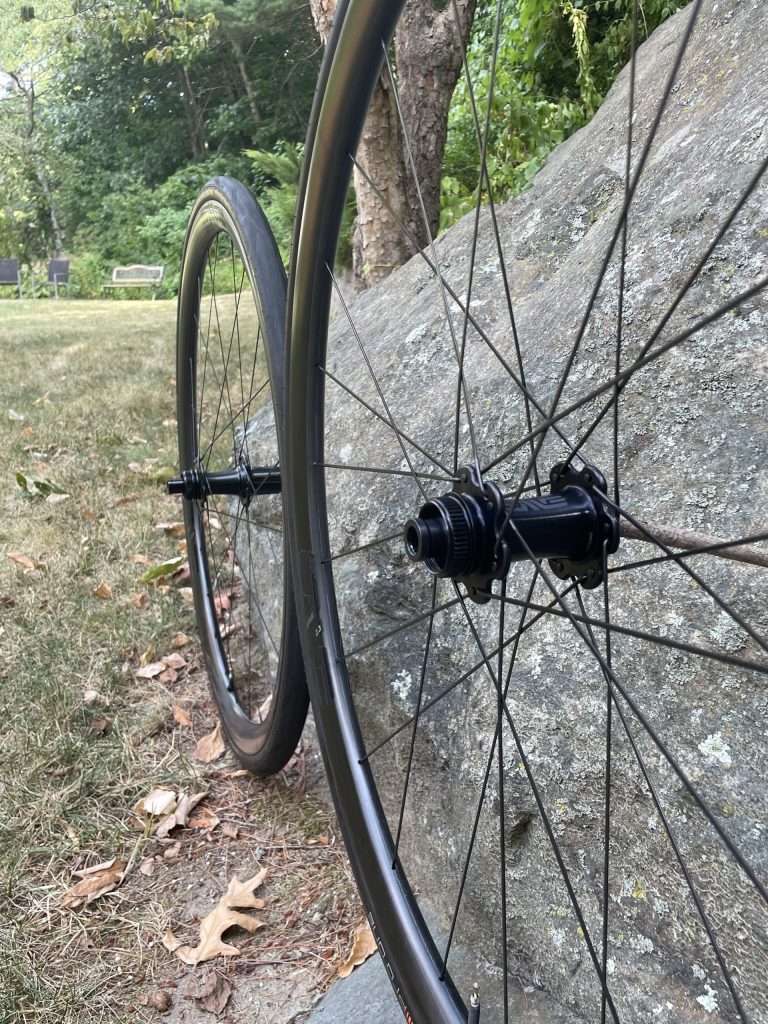
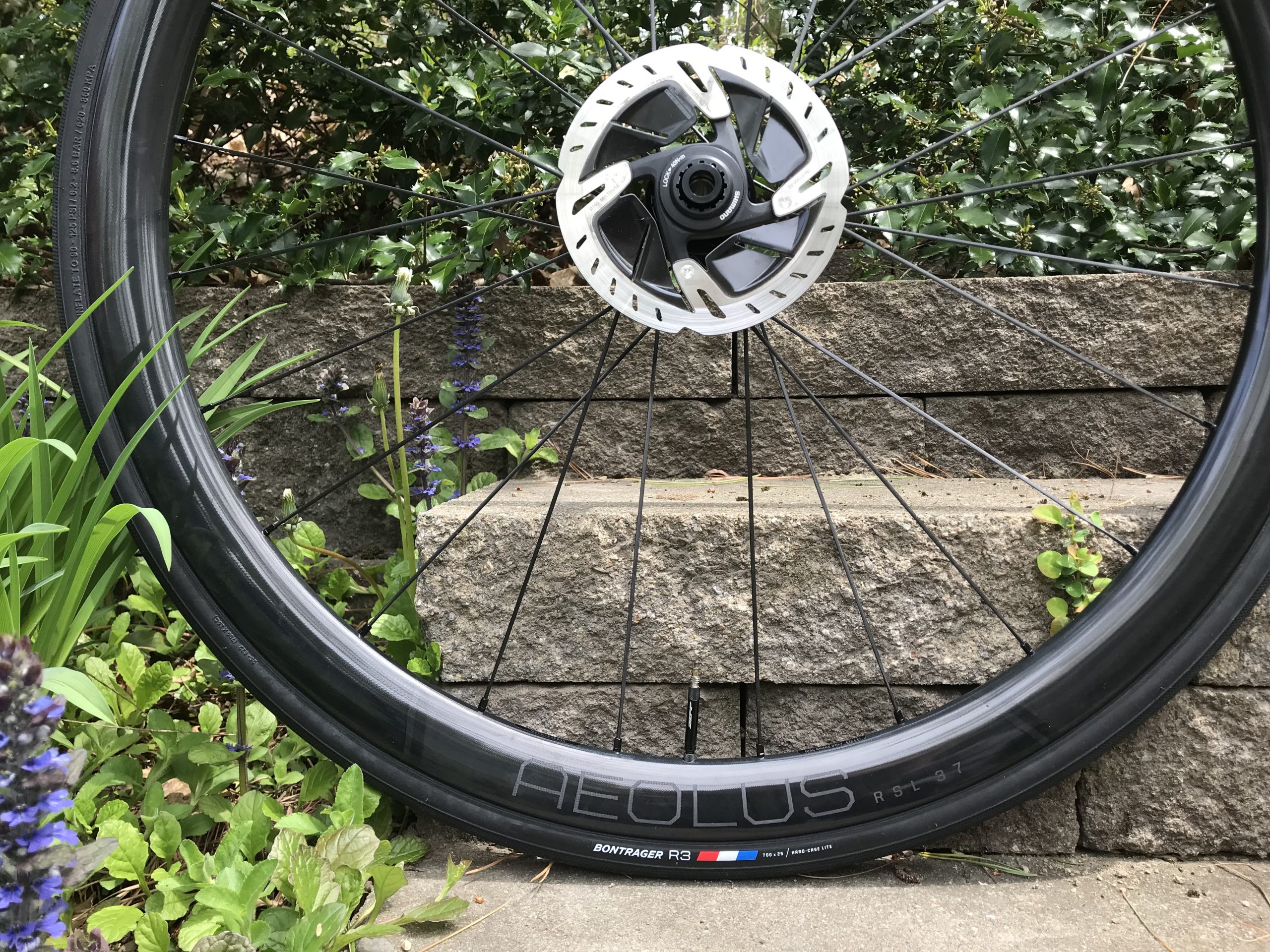
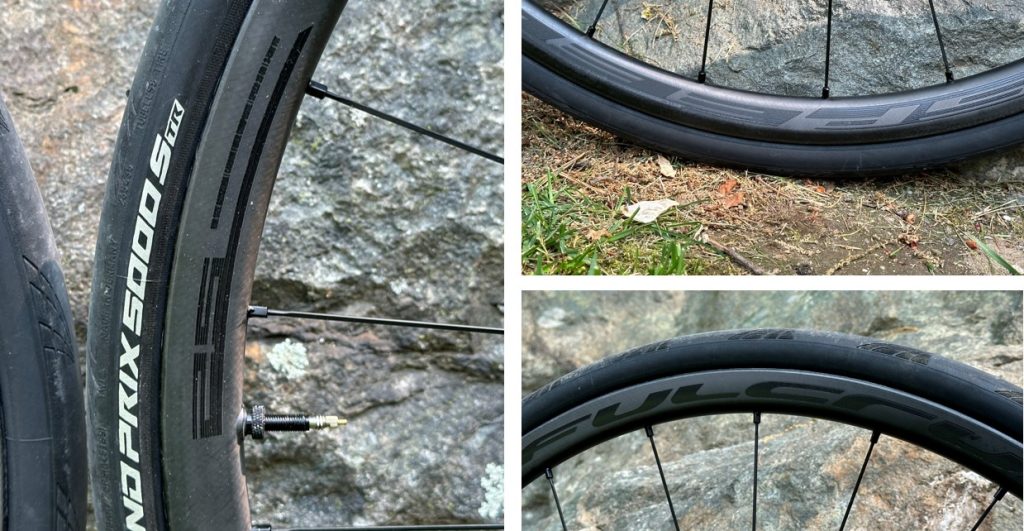
Hi Steve,
I love your honest reviews and was wondering if you could help me decide on some wheels please?
I have got a Specialized Aethos S-Works and though I do like the stock wheels they are Roval ones and not tubeless ready. I previously had Zipp303s with 28mm tubeless tyres and they were quite twitchy in the cross winds so am probably looking for something a bit different.
I do only road riding in a very hilly area. I am looking at the Enve SES 3.4 or the Zipp NSW 353 as I want something tubeless and really optimised for road riding/climbing.
Which of those do you think would be best?
The only thing that puts me off the Zipps is the interval rim width is pretty big, does that make a big difference to climbing performance do you think?
Really appreciate your thoughts!
Best wishes,
Aaron – UK
Aaron, if you can afford it, the Zipp 353 NSW is hands-down the best pure climbing wheelset we’ve tested. The 25mm internal rim width allows you to put on a wider tubeless, hookless tire (like the Continental GP 5000 S TR) without reservation for all the benefits – comfort, handling, grip, rolling resistance, puncture resilience – they bring. Steve
What is the ideal tire width on Zipp 353 NSW’s with Continental 5000S TR
Mark, “Ideal” depends on what kind of road you’re riding and what kind of room you have between your front fork and rear stays. On the smoothest paved roads, I’d suggest no less than a 28mm wide tire. If you can fit it in your frame, you could go to 30mm and gain some more comfort (with a lower tire pressure). If you are riding the 353 NSW on a dirt or cobbled road, go with the 32mm. I’m currently testing these tires and researching tire-rim combinations more broadly so will have more to say later. Steve
Hello, and hope all is well. My question is for pretty much pure gravel riding in Colorado. I currently use a Santa Cruz Stigmata (alloy rims) with 40mm Terrene Elwood tubeless tires. I want to shave some weight off and get a nice climbing/descending wheel and I’m around 80 Kg. Will regular tubeless tires work well with these hookless rims or is it manufacturer by manufacturer still? I usually use Terrene or WTB tubeless tires at around 35-40 PSI.
Which wheelset would you recommend that is relatively stiff and snappy?
Neil, click on this link for my gravel reviews including wheelset and tires. Steve
I would like to see you update the review to include the Roval Alpinist CLX II wheelset. They appear notably cheaper, lighter, better crash protection designed and have the DT Swiss 180 internals with SINC ceramic bearings (roll better than Zipp hubs?) than 353s. They are also specifically designed to be both tubeless and tube compatible. On paper, it is hard to see that the Zipp 353 NSWs are better in any way. I have zero affiliation with Specialized/Roval. Reviews of this wheelset say that they perform relatively well on flats in holding speed also. Unless you only ride in crits and time-trials, they appear to be one of the best ever all-round wheelsets to date, especially for amateur riders. Looking forward to your more expert views.
Brian, thanks for your input. Until recently, the Roval Alpinist was only made for clincher tires so I hadn’t considered it. It is one of the wheelsets nominated and is on the current ballot for Know’s Club members to vote on for an upcoming review. I take the kind of specs you’ve mentioned into consideration but on-the-road performance drives the evaluations and recommendations you’ll see in my reviews. Best, Steve
I’m fairly certain real-world testing has shown that Zipp’s gimmicky NSW series are actually WORSE by 10+ watts than their non-wavy predecessors….
I miss other wheels opinion such as campagnolo and dt swiss. What is your opinion of shamal carbon?
Carlos, At a claimed 1585 grams, I wouldn’t consider the Shamal Carbon a lightweight wheelset for climbing. I’ve reviewed Campagnolo Bora WTO 33 and Bora Ultra WTO 45 wheels elsewhere on the site but both are all-around wheels that can climb but don’t compete with the climbing ability of those in this review. DT Swiss’ climbing wheelset is the PRC 1100 DICUT Mon Chasseral that is lightweight (claimed 1266g) but is also quite narrow (18mm inside; 24mm outside width) by today’s standards and very expensive. I plan to be publishing reviews of Roval and Fulcurm climbing wheels this fall. Steve
Hi Steve, I’m a lightweight female rider (56 kg). This summer, in the Alps, I suffered (scary!) from what you described as “… the lighter rider will be more prone to getting pushed around on a windy descent if the wheel’s profile doesn’t handle crosswinds well and will benefit more from an aerodynamic profile that cuts through both crosswinds and the apparent wind created going down a mountain”. Which carbon wheels do you suggest for a lightweight rider to climb light and descend in a safe manner?
Looking forward to your suggestions! Thanks in advance, Mariet
Hi Mariet, the comment you quoted is true in general but all the wheels I’ve reviewed here are fine in crosswinds even for a lighter rider of your weight. It’s when you get on deeper wheels in the 45mm and up range that don’t have rim profiles designed and tested to work well in crosswinds that you can get into trouble. If you want to be super conservative, go with wheels that are at or under 40mm deep. We’re reviewing a few additional ones now and over the next few months that are closer to 30mm that might also suit you. Steve
Hi Steve I happen to own several bikes with all or the above wheels including Campy. I have switched the wheels around to different bikes. Hands down ZIPP 3(3 NSW. RESERVES are very nice as are the Bontragers. For the dollar Bontrager 37’s are great.
Hi Steve,
Much appreciated all your time in your reviews. I wanted to ask for a general purpose, mostly 95% paved… Between the 303 Firecrest and the Enve 3.4 SES. What would you suggest without thinking in the price.
Thanks !
Daniel, Between those two, if price wasn’t an issue, I’d go with the ENVE SES 3.4. Steve
Thanks so much for your reply Steve, much appreciated.
Last question, between the enve 3.4 and the zipp 353 (not thinking in price)… is worth it the 353 ?
*Mixed terrains of flats and hills
Between those two wheels, if price isn’t an issue, I’d go with the Zipp 353 NSW.
Thank you very much !!! Steve for a 150 pounds rider, the best all around would you suggest pushing more into the shallower Enve 4.5 / Zipp 454 ?
Daniel, May I suggest you read my review about How to Pick the Best Wheelset for You or that you become a Know’s Club Leader and I will recommend a wheelset for your specific goals, profile, and budget. Steve
hi Steve. Great article with great insight.
Question for you since you’ve tested the 303FCs. I recently purchased a new bike that had an option for 303FC wheels on them. I chose them.
What I’m finding is that the wheels, when my bike is on the stand, don’t seem to roll for very long when the thru-axles are tightened to spec. They stop quicker than I’d expect them to. The valve stem can stop anywhere in the rotation and not move to 6 o’clock position.
On the road, the bike feels like it is slower than my Orbea Orca (circa 2005) with Dura-Ace wheels.
I’ve asked Zipp about this and they said it was likely because they pack their hubs so heavily with grease and that they’d loosen up over time.
Did you find this to be the case on these wheels when you tested them? Felt like they rolled slower on downhills?
Thanks for any insight you can provide.
Oh….and I took the brake pads completely out of play by removing them altogether and same thing happened…
Miguel, I don’t consider how freely or long a wheel spins to be a good measure of its hubs or overall performance. It’s more often an indication of how the preload is set and, as the Zipp rep told you, how packed the grease is. Unless it’s something obvious, like the rotors rubbing against the calipers – something you’d notice right away – I really wouldn’t give it much of a thought on a new set of wheels. On an older set of wheels, spinning for a longer time in the stand may actually indicate that that the hub is loose and needs servicing.
Of course, how the wheels roll out on the road when they are under load is the real indication of their performance. You might do some A-B testing with your Orbea down a hill while riding in a similar positon and in similar wind conditions. While we didn’t notice any issues with the 303 FC we tested, it may be that there is something that needs servicing with your wheels if they are notably slower than your DAs. Steve
Hi Steve. First, thank you for answering my question so quickly.
That first sentence is very telling! I thought it would be considered “drag”. But that is so hard to measure.
So many factors have gone into my thoughts on this. I was hesitant on getting a new bike, but I thought it was time. The wheels, I thought would be a huge upgrade over my DAs. I had not considered the age of the DA wheels to be an indication the hubs were loose, but that is a good point. They don’t feel loose at all..but who knows. Old wheels are 23mm vs 30mm (yeah big). The wheels feel very “dull”, vs, say the constant vibration of what 110psi brings.. Kinda nice.
To answer that last paragraph, yes…there are downhill sections here where, in my head, they do feel slower. I took December (somewhat) off the bike and started riding the new bike when I got back on. Lots of variables in play. It is pretty chilly so lots of clothes, the wind is more than normal almost on a daily basis, etc. I’ve seen a few message boards where others had the same thought..that they stopped rolling quicker than they should…but…my LBS gave an assessment that they appeared in great working order too. The bike is much more comfortable though and the 30mm tires feel like a huge part of that.
Anyway, thank you for your insight. Great article! Look forward to reading more!
Take care Steve.
Hi Steve, I was wondering if you had reviewed or could comment on the following climbing wheelsets: dedaelementi RS4DB or the Hunt aerodynamicist 32 UD and how they would compare to the ZIPP 303 Firecrest for example
Hi Roger, I’ve not reviewed either of the wheelsets you asked about. You can always use the search bar to see if I’ve reviewed or commented on a wheelset or other product you’re interested in. Steve
Thank you
hello
First congratulations on the reviews! I love honest opinions!
I have a Trek Émonda Slr 9 (dura ace 12v) mounted with aeolus RSL 37 and bontrager 25c tires in the R3 Hard case lite model.
I pedal on roads with reasonable good surfaces. With not very high altitudes. They are generally flat surfaces or hills with an average slope of 5%.
Sloping Mountains meet only once a week
I’m a thin cyclist, 59 to 60 kg, 42 years old and with 23 years of cycling, I have a good experience as an amateur cyclist.
After the introduction I have 2 questions:
1- in the configuration I use (r3 and aeolus 37) what would be the recommended pressure (bike 7kg, cyclist 60kg and pay 2kg)? I usually use 100psi on latex tubes.
2- I already used 45mm profile wheels (45sl hologram) when I had a Cannondale supersix evo 1 year ago. On the current Émonda bike I notice that on the flat sections I have an average loss of 20w compared to the Cannondale, that is, to maintain the same speed I need to push harder on the Émonda (flat tech). Would it be relevant if I changed the wheels for an Aeolus RSL 51?
Thanks
Saulo (Brazil)
Saulo,
Thanks for your kind feedback.
To determine the best tire pressure, I suggest you use one of the tire calculators described in my post here: https://intheknowcycling.com/how-wide-wheels-wide-tires-make-you-faster/#IV and try it first at that pressure and then a few psi lower until they feel mushy and then raise it up again. Based on what you described, I think you are inflating your tires far to high and that will lead to vibration rolling resistance losses. That is also described in the article
All else being equal and when you are riding at speeds where aero performance makes a difference – >20mph/32kpg – the Aeolus RSL 51 will enable you to ride noticeably faster (or put out less watts at the same speed) on flats than the Aeolus RSL 37. See my review of that wheelset and a comparison to others of that depth here: https://intheknowcycling.com/carbon-disc-wheelset/#Bontrager How much faster or less effort depends on your speed and other conditions but I wouldn’t expect you to gain 20 watts on the same bike. Most of the 20 watts loss you noted is likely from some combination of the difference in the aero performance of the bikes and, even more so, the body position those bikes put you in. Steve
Hi Steve,
Interesting to see RSL 37V. I do riding on paved roads only. Do you think RSL 37V is better than RSL 37 on paved roads only?
What do you think RSL37V and RSL51 in terms of Aerodynamics? (as RSL37V has wider internal/external while RSL51 has higher rim depth)
Best,
Eric
Eric, If you do a lot of climbing, I’d go with the RSL 37 over the 37V. More all-around or on rougher paved roads, the 37V over the 37. The RSL51 is more aero than either. (See my RSL51 review). Steve
Hi Steve,
I was wondering whether you would consider testing lightweight climbing wheels from Lightweight?
Would be fun to read your independant opinion on a niche product 🙂
Philipp, Ah, I see what you did there. I rode one of my friend’s Lightweight wheels once. They are indeed lightweight, but no lighter than some of the lighter ones in this review. And they are as stiff as any wheelset I’ve ridden. Unfortunately, they are both laterally stiff, which is great for climbing, and vertically stiff which is horrible for descending. I don’t think my butt has ever recovered from that experience.
Their latest wheelset – the Obermayer EVO – is tubeless, disc brake but only 18mm internal 24mm external and costs about Euro 6500. Other wheelsets in their line are tubular, rim brake and just as narrow if not narrower and equally expensive. A niche product indeed, perhaps a niche within niches but not one that I think would appeal to all but a few road cycling enthusiasts. Cheers, Steve
Great, thanks for your answer!
Hey!
Long time follower but first time commenter.
I’m looking at either 303 firecrest or 353 nsw to used on paved roads and hilly climbs, on a geography mostly similar to the ardennes.
I’m not really price-conscious but I’m having a hard time justifying paying double for 353 nsw, seeing that I’m an average rider and the only real difference 353 would make for me will be the killer looks, I suppose.
Though, I won’t go backrupt if I pay double and if you say I absolutely should go for it. I have a bespoke XCR-tubing bike with ultegra 12 groupset fo reference. So, a little bit fancy but not like a high-end carbon bike and not on the lighter side of the scale.
Cheerios!
EMRE, From what you describe about your riding (“average rider”), you probably won’t notice a performance difference between the two. I’ll leave it to you to decide whether the “killer looks” is worth “paying double.” For some it is, for others not. That’s why there’s a market for both wheelsets. Steve
Hello.
For high lateral stiffness, which is the priority: rim height or rim width?
For a rider weighing 63kg, would the Fulcrum speed 25 feel like the stiffer wheels here?
Birol, specs like rim height and width are less important than the layups, spoke tension and bracing angles in determining stiffness. See the chart above https://intheknowcycling.com/best-climbing-wheels/#Reviews for stiffness comparison. All of that said, any of these wheels will feel sufficiently stiff for a 63-80kg rider. Steve
Thank you for your very quick response and interest.
I was ready to get the Alpinist CLX II for road climbs in Colorado. Came across your review, which is very insightful & helpful, and now it seems I should go for the Terra CLX II. Are you sure? 🙂
Dard, Yes, especially for Colorado, where the road surfaces on climbs can get a little rough. The Terra CLX II’s wider internal rim allows for a wider tire or at least lower pressure on the same-width tire. That will give you more comfort, less rolling resistance, and better handling going up and down those climbs. Steve
Thank you!
Hello Steve, for mainly road cycling on an all terrain bike, TCR is the Bontrager RSL37 V as responsive and same characteristics as the normal RSL37 ?
I can get the V version on sale for same price as the normal RSL37 with the benefit the inner rim and out rim allows somewhat wider tyres without affecting any aero benefit and probably more comfort.
Other option available on sale is the Cadex 35 or also Cadex 36 for very similar sales price
Please bear in mind it will all be used for road cycling so a nimble, responsive and quick wheelset . They seem very similar
Eric, in a word, yes. In more words, see https://intheknowcycling.com/all-road-wheels/#37V. Re Cadex, see https://intheknowcycling.com/all-road-wheels/#AR35 and https://intheknowcycling.com/?s=cadex. Feel free to use the search box to find other wheels we’ve reviewed. Steve
Hi Steve – I’m heading out to France next week to hopefully cycle some of the iconic TdF climbs and wondered if you could offer some advice with regard to my cross wind concerns of using a set of Zipp 404 FC out there?
I weigh around 66kg and can’t decide whether or not I should buy an alternative wheelset specifically for the trip.
Many thanks
Iain, the Zipp 404 FC is one of the better wheelsets we’ve tested in crosswinds for that 60mm+ aero depth. And while they also climb reasonably well (again for their depth), if you’ve got the money, I’d be motivated to buy a climbing wheelset that’s 200-250 g lighter to get the most from those climbs. You’ll certainly notice the difference with the lighter wheels and get the extra benefit of more stability should it get pretty windy. Steve
Thanks for the advice, much appreciated.